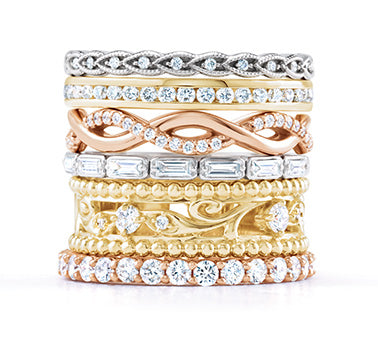Lifetime Warranty
24/7 Hour Customer Service
Free Shipping
30-Day Return
Moijey Fine Jewelry & Diamonds Blog
How Ruby Grows to Become The King of Gems
Originally posted on July 6th, 2017
Updated April 13th, 2020
What's incredible about rubies is that they are one of the rarest gemstones in the world. I realize that I say that for every other gemstone article I've written for Moijey. But out of all the gems I've written about so far, only rubies cost more per carat. I looked it up recently, and high-quality rubies are worth approximately $1,000 to $3,000 per carat.





Its because rubies form under unique circumstances beneath the earth's crust. Some rubies develop in metamorphic rocks, which is an original rock that forms under extreme heat and pressure, and a chemical change ensues. Marble is an example of metamorphic rock. Depending on the location, marble could be crystallized limestone. The most beautiful rubies in the world develop from marble. Because there is a low iron content in marble, the rubies will have pure red, and there won't be any brown tinge from traces of iron. The Featured Image for this article is a prime example of a ruby in marble. Rubies that develop in marble originate in Myanmar (formerly Burma), the Himalayas, and Vietnam.

Rubies that develop in Thailand and Cambodia possess traces of iron from being hosted in alkali-basalt rocks. Alkali-basalt is a formerly molten rock that transported the rubies to the earth's surface. As a result of the iron in their chemical composition, these rubies will have a darker hue than their marble-hosted counterparts. Despite the iron traces, they'll still have a vibrant shade of red.

Another way rubies develop in the earth is through a process called metasomatism. Metasomatism, which occurs in India, Kenya, Sri Lanka, Tanzania, and Central Vietnam, is where metamorphic rock forms and changes after either the introduction or removal of certain chemicals and fluids. For rubies, after silicon gets removed from the rock, only aluminum and oxygen remain, forming corundum crystals. Depending on where the rubies originate, some rubies might have a low iron content or a high iron content.

It is remarkable how such beautiful stones can form under extreme circumstances. I remarked about this in April for Diamonds, but I feel that this is relevant for rubies too. In the article, I mentioned the locations for the ruby deposits. Next week, I'll go into more detail about the most prominent ruby mines on the planet.


How Ruby Grows to Become The King of Gems
Originally posted on July 6th, 2017
Updated April 13th, 2020
What's incredible about rubies is that they are one of the rarest gemstones in the world. I realize that I say that for every other gemstone article I've written for Moijey. But out of all the gems I've written about so far, only rubies cost more per carat. I looked it up recently, and high-quality rubies are worth approximately $1,000 to $3,000 per carat.





Its because rubies form under unique circumstances beneath the earth's crust. Some rubies develop in metamorphic rocks, which is an original rock that forms under extreme heat and pressure, and a chemical change ensues. Marble is an example of metamorphic rock. Depending on the location, marble could be crystallized limestone. The most beautiful rubies in the world develop from marble. Because there is a low iron content in marble, the rubies will have pure red, and there won't be any brown tinge from traces of iron. The Featured Image for this article is a prime example of a ruby in marble. Rubies that develop in marble originate in Myanmar (formerly Burma), the Himalayas, and Vietnam.

Rubies that develop in Thailand and Cambodia possess traces of iron from being hosted in alkali-basalt rocks. Alkali-basalt is a formerly molten rock that transported the rubies to the earth's surface. As a result of the iron in their chemical composition, these rubies will have a darker hue than their marble-hosted counterparts. Despite the iron traces, they'll still have a vibrant shade of red.

Another way rubies develop in the earth is through a process called metasomatism. Metasomatism, which occurs in India, Kenya, Sri Lanka, Tanzania, and Central Vietnam, is where metamorphic rock forms and changes after either the introduction or removal of certain chemicals and fluids. For rubies, after silicon gets removed from the rock, only aluminum and oxygen remain, forming corundum crystals. Depending on where the rubies originate, some rubies might have a low iron content or a high iron content.

It is remarkable how such beautiful stones can form under extreme circumstances. I remarked about this in April for Diamonds, but I feel that this is relevant for rubies too. In the article, I mentioned the locations for the ruby deposits. Next week, I'll go into more detail about the most prominent ruby mines on the planet.








